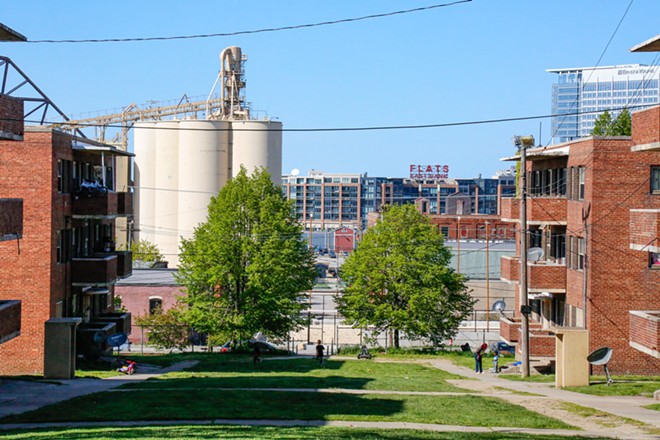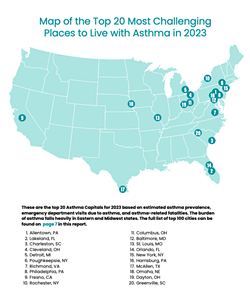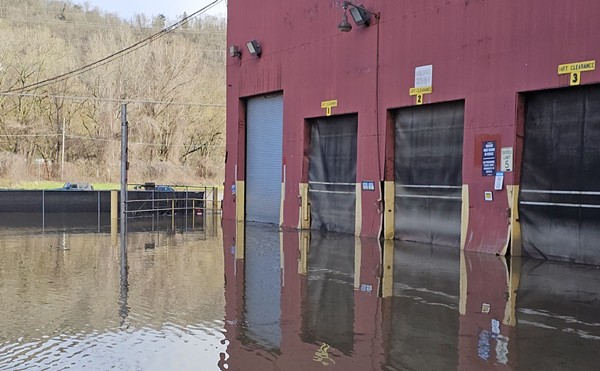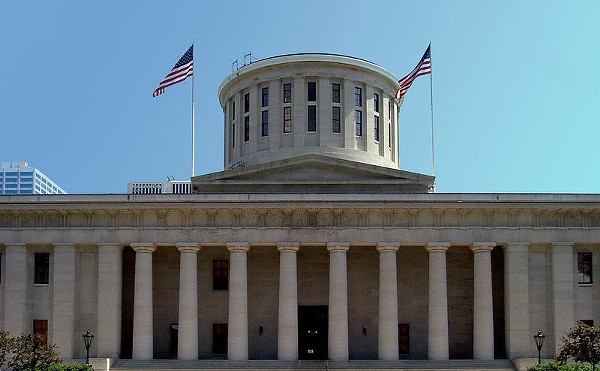
Though the researchers didn't delve into contributors like poverty levels, public smoking laws and (lack of) insurance rates, the AAFA culled together asthma-related emergency room visits, causes of death and an overall asthma prevalence using 2022 health record data.
Cleveland ticked up a spot in the wrong direction from last year in the report, which lists 100 of the largest American cities based on asthma lethality, with only Allentown, Penns., Lakeland, Fla., and Charleston, S.C. scoring worse.
That makes Cleveland, yes, the current worst in the Midwest for such patients.
Despite the AAFA's acknowledgment of societal causes for chronic asthma, Dave Margolius, the head of Cleveland's Department of Public Health, insists those causes take more of a center stage in the conversation of the city's higher risk.
"All these [rates] follow the same pattern," Margolius told Scene, "which is in neighborhoods that have been redlined and systematically underinvested in, and segregated to people who are Black. It's all related to and stems from structural racism."
Margolius points to a data map constructed by the Better Health Partnership, which shows that, in places like Beachwood or Tremont, Black kids aged 6 to 17 are diagnosed with asthma at three to six times the rate of their white neighbors.
And the causes are quite numerous. High car congestion and traffic (especially large trucks and SUVs), close proximity to factories and salt mills, high exposure to air pollutants and lead poisoning, or just simple exorbitant health insurance rates—all these, Margolius said, contribute to Cleveland's lung disease woes.
All of it, he added, the city is well aware of trying to mend. In the past year, the Bibb administration pushed legislation, like Complete and Open Streets, to cut down on car dependence for the 79%, according to U.S. Census data, reliant on one for commuting in the city. Likewise, city council's recent elimination of parking minimums near transit lines could mean a shifting, say, in the next decade, to less carbon-emitting forms of getting around and populations centered around high-frequency bus and rapid lines.
In Ohio City, the local community development corporation, Ohio City Inc., is underway with its air quality survey of Lakeview Terrace, the public housing complex historically plagued by fuel-fired pollutants (like the particle PM 2.5).
It's possible that the city could look into a lawsuit of asthma-related drug companies, like ProAir or Ventolin, as it did with "price-fixing" insulin manufacturers in July. Price gouging, Margolius noted, is one of the "top three leading causes" for rising healthcare costs, which could be contributing to Cleveland's high rate of ER visits.
"It's not race, it's racism, right? It's the systems of oppression that lead to higher rates of air pollution from cars, that lead to higher rates of smoking, from Big Tobacco targeting, that lead to fewer trees, fewer parks, homes with more dust and peeling paint," Margolius said. "All those things are from those same systems of oppression that force people with high rates of poverty to be segregated to certain neighborhoods."
Subscribe to Cleveland Scene newsletters.
Follow us: Apple News | Google News | NewsBreak | Reddit | Instagram | Facebook | Twitter | Or sign up for our RSS Feed


![Shauntya Ellis, 35, and her dog, King. Ellis, who has been trying to move out of Lakeview since she was shot in 2018, said CMHA's been neglectful of both her ask for relocation and her son's asthma. "They never tried to do nothing about it," she said. "It's like that they can do something, [but it must] get bad before anybody pays attention."](https://media2.clevescene.com/clevescene/imager/rats-dirty-air-broken-faucets-lakeview-terrace-residents-wonder-when-help-will-come/u/r-big16x10/41984316/-m1a7338.jpg?cb=1684269758)












